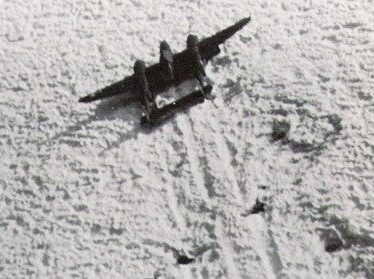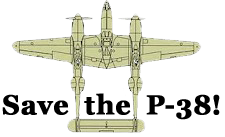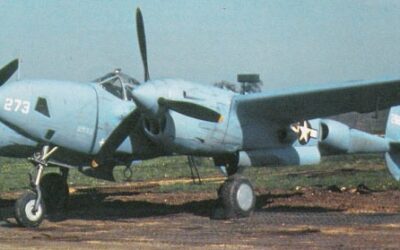In the Beginning…
On July 15, 1942, a flight of six P-38s and two B-17 bombers, with a total of 25 crew members on board, took off from Presque Isle Air Base in Maine headed for the U.K. What followed was a harrowing and life-threatening landing of the entire squadron on a remote ice cap in Greenland. Miraculously, none of the crew was lost, and they were all rescued and returned safely home after spending several days on the desolate ice.
Fifty years later a small group of aviation enthusiasts decided to locate that squadron, who had come to be known as “The Lost Squadron,” and to recover one of the lost P‑38s. It turned out to be no easy task, as the planes had been buried under 25 stories of ice and drifted over a mile from their original location.
The story of this mission and the recovery of the P‑38 (which was christened “Glacier Girl”) is a fascinating bit of history, and this section is dedicated to all the people involved in the discovery, recovery and restoration of P‑38F-1, SN #41-7630.
The very first shot on this tribute video is of Glacier Girl taking to the air for the first time after being buried in the ice for half a century. Awe inspiring!
NOTE: We do not own Glacier Girl and provide these pages for your enjoyment only. We can’t, therefore, answer any email questions about her scheduled appearances, etc. As we find information about her, we’ll either include it here or post it on Facebook for you.
 *Courtesy of AETN: Glacier Girl has been sold to Rod Lewis and is no longer housed at Middlesboro, KY. She is home in Texas now, and has been appearing in several air shows each year. You can find more pictures and info on the Lewis Air Legends website the owner of Glacier Girl.
*Courtesy of AETN: Glacier Girl has been sold to Rod Lewis and is no longer housed at Middlesboro, KY. She is home in Texas now, and has been appearing in several air shows each year. You can find more pictures and info on the Lewis Air Legends website the owner of Glacier Girl.

“The Lost Squadron”
by David Hayes.
LIEUTENANT JOSEPH BRADLEY McMANUS shifted his position in the cramped cockpit of his P‑38 fighter and glanced behind him at the faint outline of the Labrador coast. For a moment the boyish-looking twenty-four-year-old thought about his home in Philadelphia, his family, who were taking their summer holidays on a New Jersey beach, and his girlfriend, Elizabeth. But he knew sentimental reflections were potentially dangerous. Such thoughts threatened to rob a young pilot en route to a war in Europe of his nerve, a commodity McManus and his fellow airmen would soon be needing in surplus reserves. McManus looked down. What lay below was both exhilarating and sobering: dozens of weirdly shaped drifting icebergs floating in the cold, blue North Atlantic. As far as he could see, there wasn’t anywhere to set down a P‑38 and walk away afterward.
Looking ahead, he was reassured to see Big Stoop, the massive B-17 “Flying Fortress” bomber that was his mother ship. McManus, a member of the 94th Fighter Squadron, First Fighter Group, was flying with Tomcat Green four P‑38s riding shotgun behind Big Stoop which, along with the four P‑38s and one B-17 of Tomcat Yellow, was part of Operation Bolero, a massive buildup of U.S. warplanes in Great Britain. It was Tuesday, July 7, 1942, just seven months since the attack on Pearl Harbor had thrust the U.S. into the war. Although American forces were fighting the Japanese in the Pacific, President Franklin D. Roosevelt had declared a “Europe First” policy that gave priority to an invasion of Nazi-occupied France from English soil. In preparation for that eventual assault, American troops, tanks and planes were being shipped across the Atlantic. But the crossing was hazardous. Nazi U-boats were sinking Allied tankers and freighters at the rate of half a million tons each month, and much of the lost cargo consisted of aircraft. The boldest aspect of Operation Bolero was a pioneering scheme to fly bombers and fighters overseas in stages, refueling at bases in Labrador, Greenland and Iceland.






